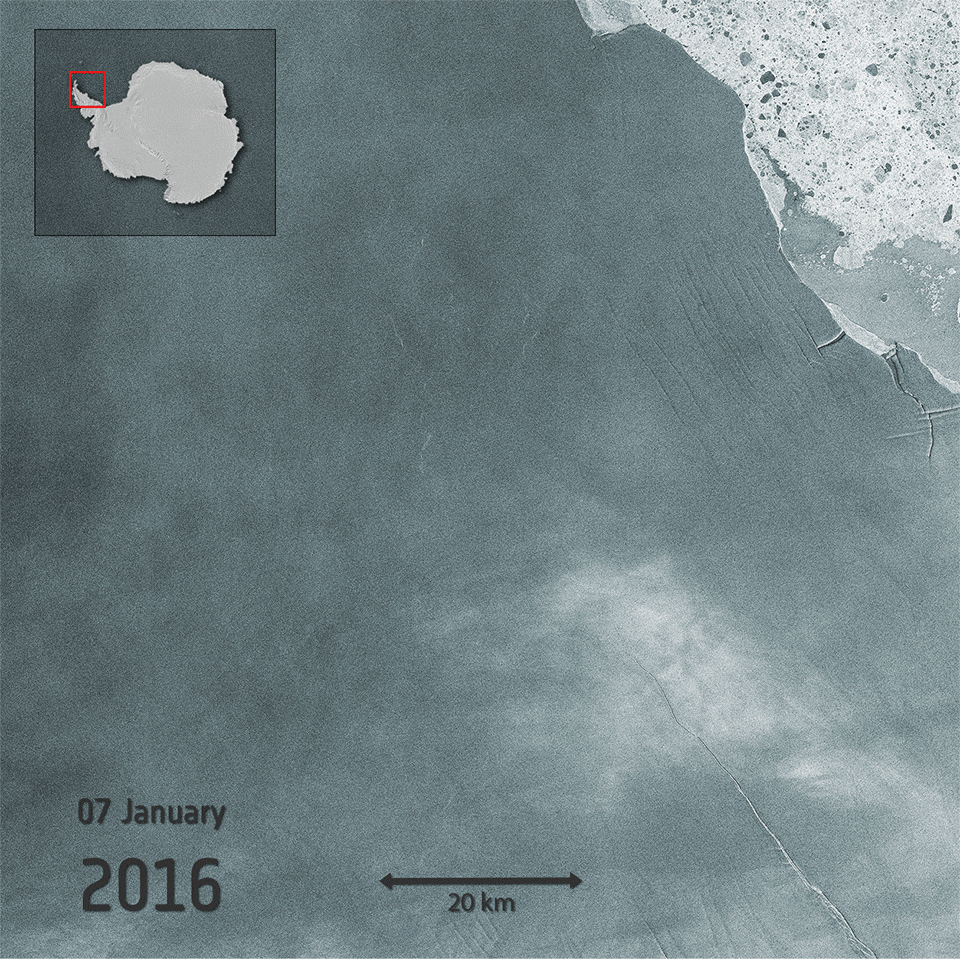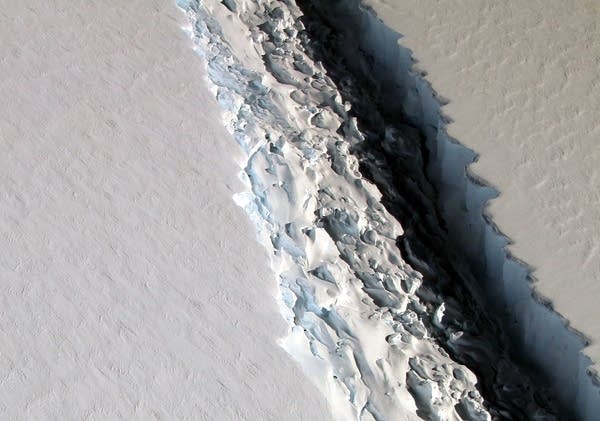Hundred mile long Antarctic ice shelf crack growing fast
A huge Antarctic ice shelf is showing signs of a major beak.
The Larsen C ice shelf shows a major crack that's over 100 miles long and up to 2 miles wide. If the crack extends another 20 miles, it will create one of the largest icebergs ever recorded.

This radar view of the crack in Larsen C shows the advance of the crack over the past year.

Here's more from NASA as they monitor the crack's progress.
Create a More Connected Minnesota
MPR News is your trusted resource for the news you need. With your support, MPR News brings accessible, courageous journalism and authentic conversation to everyone - free of paywalls and barriers. Your gift makes a difference.
With its radar vision, Sentinel-1 is monitoring a rift in the Larsen-C ice shelf in the Antarctic peninsula that will eventually calve one of the biggest icebergs ever recorded. The crack in the ice shelf first appeared several years ago, but recently it has been lengthening faster than before. Carrying radar that can 'see' through the dark, the Copernicus Sentinel-1 satellites are monitoring the situation.
The animation shows that the fissure has opened around 60 km since January last year. And, since the beginning of this January it has split a further 20 km so that the 350 m-thick shelf is held only by a thread. The crack now extends around 175 km.
When the ice shelf calves this iceberg it will be one of the largest ever recorded - but exactly how long this will take is difficult to predict. The neighboring Larsen-A and Larsen-B ice shelves suffered a similar fate with dramatic calving events in 1995 and 2002, respectively.

The New York Times elaborates on the rapidly growing fissure.
[image]
If the ice shelf breaks at the crack, Larsen C will be at its smallest size ever recorded.
That would also leave the ice front much closer to the ice shelf’s compressive arch, a line that scientists say is critical for structural support. If the front retreats past that line, scientists say, the northernmost part of the shelf could collapse within months. It could also significantly change the landscape of the Antarctic peninsula.
“At that point in time, the glaciers will react,” Eric J. Rignot, a glaciologist at NASA’s Jet Propulsion Laboratory, said. “If the ice shelf breaks apart, it will remove a buttressing force on the glaciers that flow into it. The glaciers will feel less resistance to flow, effectively removing a cork in front of them.”
NPR adds this perspective.
[image]
"I am cautiously worried," says Ala Khazendar, a geophysicist at NASA's Jet Propulsion Laboratory. "Ice shelves are very important. They are the gates of Antarctica in a way, and the gatekeepers of Antarctica."
The ice shelves are already floating, so if they fall apart it does not immediately affect sea levels. It's what they hold back — water from all the inland glaciers — that could be problematic.
Khazendar says there are two possible scenarios. One, the iceberg will break off, he says, "and nothing spectacular will happen for many, many years." The glaciers will bulk it up with ice until it's back to its former look. Or, two, this iceberg is just the first of many irreversible losses for Larsen C, which, in combination with enough warm summers, will be weakened and shatter like the previous Larsens.
"We shall see if that big calving leads to a collapse of the ice shelf. At the moment, this is still a big question mark," says Heidi Sevestre.
According to pessimistic estimates, if the ice shelf completely disintegrated and if all the water packed in those glaciers made their way to the sea, it could significantly raise global sea levels.
"It is quite a large impact, indeed," says Sevestre.
Stay tuned.